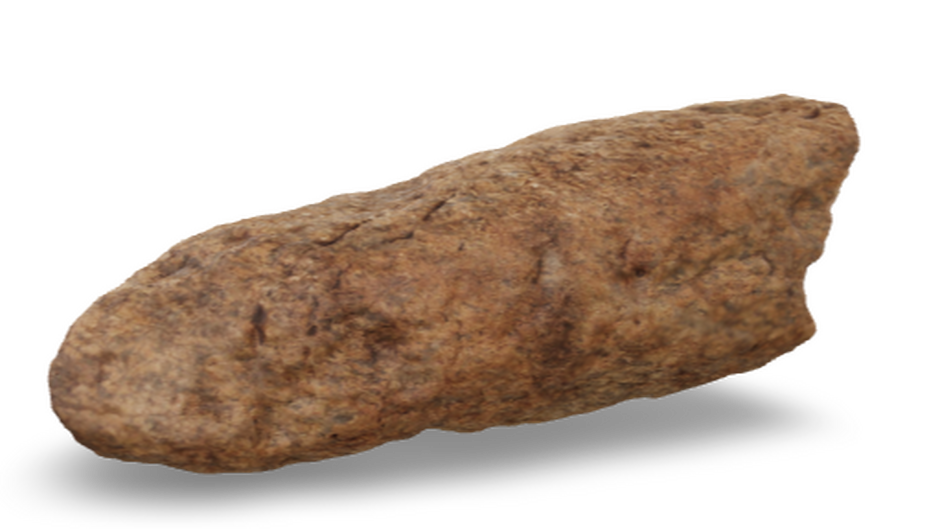Wampanoag Stone Pestle
Object ID: 19PL522.2513
- Date
- Middle-Late Archaic (7,000 - 3,000 years ago)
- Material
- Stone, Granite
- Author/Maker
- Artist’s name is no longer known.
- Source
- Plimoth Patuxet Museums Archaeology Collection

Description
For thousands of years, Wampanoag women used wooden and stone mortars and pestles to pound corn into flour for preparing boiled bread, nasaump, and other traditional dishes. While most corn was allowed to fully mature and dry on the cob, some corn was picked and eaten green in late August or early September. This early ripe corn is called “green corn” or “corn in the milk stage” due to the kernels’ milky juice. During the green corn harvest, Wampanoag and other Native people observe important rituals to give thanks to the Creator and celebrate with feasting and dancing. Dried kernels were often stored in large woven bags and ground for flour and nasampe when needed. Dried corn could also be parched over a fire and pounded into nokehig, a fine corn flour used for thickening soups and often carried by travelers and easily rehydrated as a quick, energy-rich meal.
Compare this object to an English mortar and pestle.
Media
Touch the screen or use your mouse to manipulate the archaeological artifact. What do you notice when you look closely?

As our society reexamines the meaning of gender for a new generation, Malka Benjamin and Kerri Helme discuss what it meant to be a woman in English and Wampanoag societies 400 years. Please be advised that the conversation includes information about female menstruation, sex, pregnancy, miscarriage, sexual assault, and childbirth.

Watch “Grist For the Mill” to learn more about mills and corn grinding technologies in Plymouth Colony and Patuxet.
Discussion Questions
-
Who used these tools? Are your answers the same for both English and Wampanoag communities?
-
What materials are used to make these tools? Are they the same or different?
-
What would it be like to grind corn for hours every day? How might it affect your body over time?
-
Why is it important to consider the contributions women and children made to the success of Plymouth Colony and Patuxet?
-
How do you help your family at home? Compare what you do with English and Wampanoag children in the 1600s. What do you all have in common?
